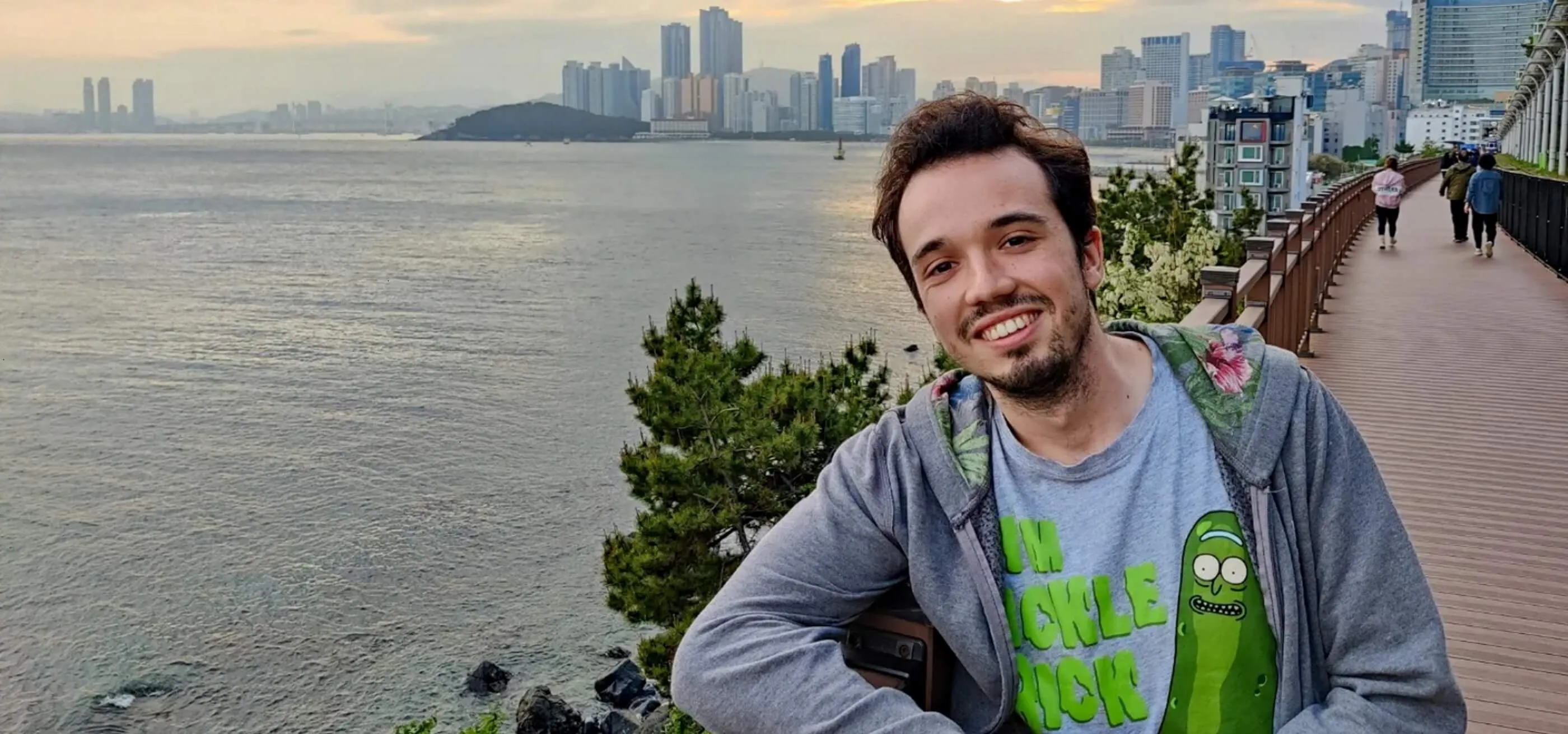Jon Zapata is making some intriguing contributions to the field of astrophysics research. A graduate of the BS in Computer Science in Real-Time Interactive Simulation program, he currently works at the Donostia International Physics Center (DIPC), where he designs simulations for scientific applications.
DIPC is a renowned research center located in San Sebastián, Spain, that brings together scientists from around the world to work on interdisciplinary projects. The center is dedicated to advancing knowledge through scientific collaborations — with a strong focus on theoretical and computational physics.
I am passionate about the possibilities that simulations offer in understanding complex phenomena and solving real-world problems.
Zapata’s journey began during his fourth year of study when he secured an internship at DIPC. During this internship, he worked on a groundbreaking project to create an interactive virtual reality experience that could simulate the interaction of particles in the universe using Unreal Engine 4 and the Niagara VFX system. The project was an instant hit with users and was showcased at several scientific outreach events, proving itself a useful tool for learning about the universe in a fun and engaging way.
During the internship, Zapata gained valuable experience in real-world simulation development, including a better understanding of the various scientific applications of simulations. His work was highly praised by his colleagues, leading to him being offered a full-time position at DIPC at the end of his internship. His interest in the physical sciences also led him to work on scientific projects for his DigiPen coursework, including a physics engine and real-time black hole raytracer.
Today, Zapata is part of the team that creates simulations to support the research work of DIPC scientists. Unlike in the world of video games, the simulations Zapata works on are more than just visually stunning. They also strive to be scientifically accurate. As such, Zapata works closely with the scientists at DIPC to ensure the simulations meet their research needs and align with real-world scientific data. Pointing to one current research project example, Zapata’s team used an algorithm to apply the non-linear adhesion model, which helps them understand the formation of large-scale structures in the universe above the galaxy level.
“We are eagerly anticipating the publication of our research paper, which represents a thrilling new field and endeavor for me,” Zapata says.
Zapata says his experience at DigiPen Institute of Technology Europe-Bilbao was instrumental in preparing him for his career at DIPC. The Institute’s curriculum, which focuses on real-time interactive simulations, provided him with the knowledge and skills he needed to excel in his field. He also highlights specific courses such as MAT 256, which provided a crucial introduction to differential equations; PHY 300, where he learned about Joseph-Louis Lagrange and Hamiltonian dynamics; CS 180, where he learned to manage Linux environments; and CS 330, where he analyzed and developed various algorithms. Additionally, his internship at DIPC gave him valuable real-world experience and helped him develop collaborative skills that are essential in a professional environment.
Lastly, he also emphasizes the importance of the GAM project classes, where he gained experience in teamwork and building technology from scratch — skills he utilizes daily in his work for DIPC. “I do miss the camaraderie that all the students shared and how we tackled problems together,” Zapata says.
When asked about his future plans, Zapata expressed his desire to continue exploring various real-life applications of simulations, particularly in the field of physics. “I am passionate about the possibilities that simulations offer in understanding complex phenomena and solving real-world problems. I am excited to see where my career takes me next in this fascinating field,” he says.
He also hasn’t ruled out the possibility of pursuing his education even further. “I’m keeping my options open, and studying at the graduate level could provide me with the opportunity to dive deeper into the theoretical aspects of simulations and potentially contribute to advancing the field further,” he says.
